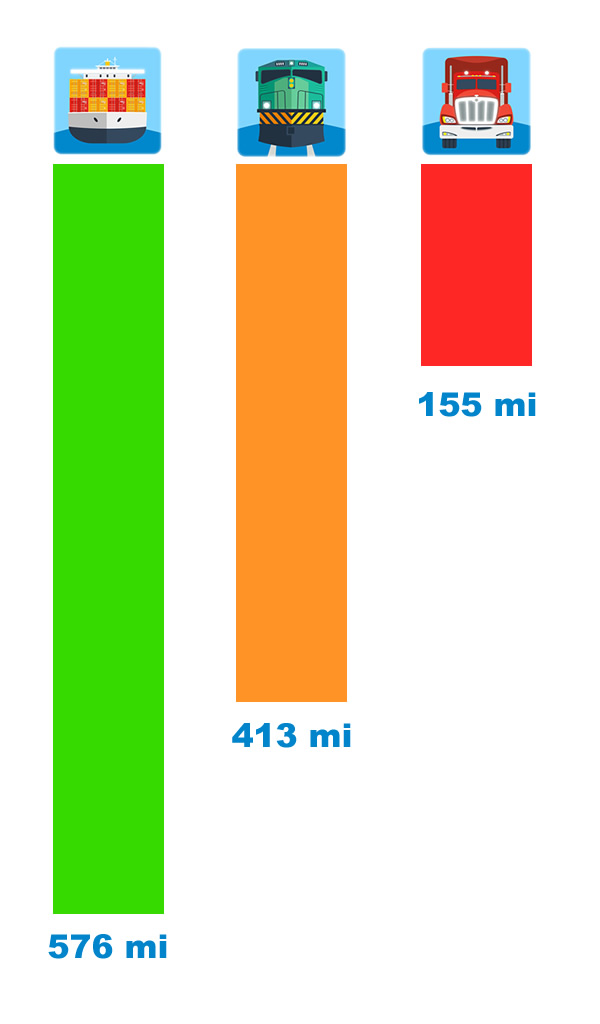Maritime shipping is transport by boat. It generally provides an efficient and effective means of getting bulk commodities to the market. Over the years, companies have either located their factories and manufacturing plants near sources of raw materials or near ports to which materials can be delivered economically. People still use boats for transport, whether it be ferries to cross rivers, sailboats to navigate the Great Lakes, or cruise ships to experience the sea.

Benefits
- High reliability: low probability of damaged goods through transport
- Best choice for transporting bulky, low-value cargo
- Low fuel costs: used when shipping expense is more important than speed

Drawbacks
- Cost of maintaining ports and dredging waterways
- Not typically door-to-door for delivery of products; requires intermodal transportation
- Speed: slower rate
Efficiency
Compare the shipping efficiency of shipping barges, freight train hopper cars, and semi trucks. How far can each mode move a ton of cargo for every gallon of fuel consumed?
[bscolumns class=”one_third”]
Barge
576 miles
[/bscolumns][bscolumns class=”one_third”]
Hopper Car
413 miles
[/bscolumns][bscolumns class=”one_third_last”]
Semi
155 miles
[/bscolumns][bscolumns class=”clear”][/bscolumns]
[spoiler title=’VIEW THE COMPARISON’ style=’orange’ collapse_link=’true’]

[/spoiler]
Capacity
Compare the cargo capacity of shipping barges, freight train hopper cars, and semi trucks.
[bscolumns class=”one_third”]
Barge
1,500 Ton
52,500 Bushels
[/bscolumns][bscolumns class=”one_third”]
Hopper Car
112 Ton
4,000 Bushels
[/bscolumns][bscolumns class=”one_third_last”]
Semi
26 Ton
910 Bushels
[/bscolumns][bscolumns class=”clear”][/bscolumns]
[spoiler title=’VIEW THE COMPARISON’ style=’red’ collapse_link=’true’]

[/spoiler]
